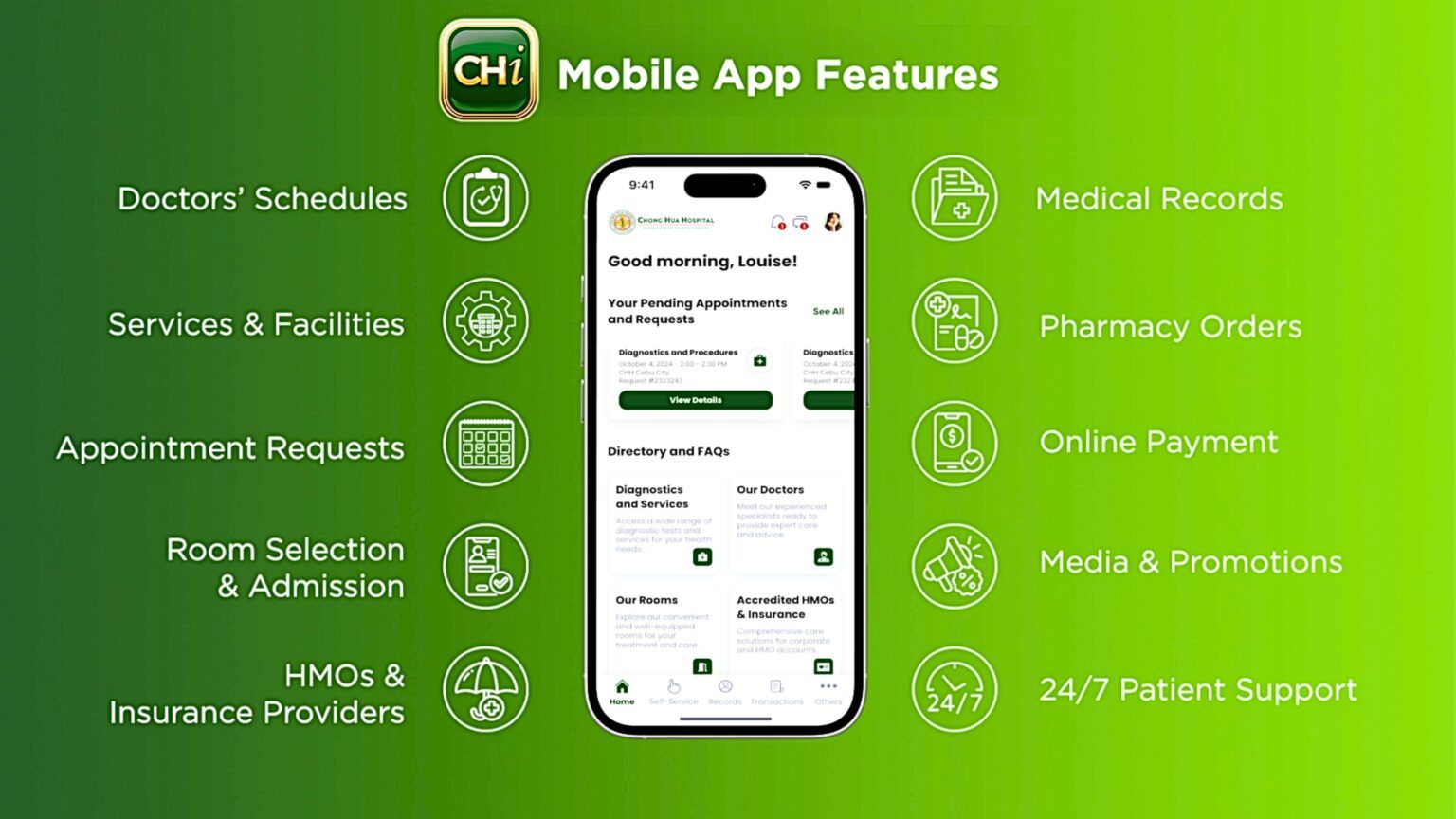Chong Hua Hospital embarks on three-year digital transformation plan
)
The CHi patient app marks the first step in its digitalisation blueprint, shares the hospital’s AVP of Enterprise Information & Technology, Ms Ethel Joy B. Querubin.
In March 2025, Chong Hua Hospital, a well-established tertiary hospital in Cebu, Philippines, launched the CHi App: a first-of-its-kind digital healthcare platform in the Visayas and Mindanao region.
Aimed at improving healthcare accessibility to local communities and enhancing patient experience, the app comes with features including real-time access to test results and medical records, prescription requests, pre-registration for hospital admission, and online payment options, with data connected across Chong Hua’s two hospitals in Cebu and Mandaue cities and its new Medical Mall.
|
|
“We wanted to have a unified platform for our healthcare services and further enhance our interactions with patients – even before they enter our hospital,” said the hospital’s AVP of Enterprise Information & Technology, Ms Ethel Joy B. Querubin. “Patient-centred care is one of our strategic pillars, and we wanted to leverage on technology to achieve it.” The app has seen strong adoption numbers so far, with over 21,000 downloads as of end July 2025. Usage is expected to grow with the phased addition of new features. Among these is an AI virtual assistant, built upon the hospital’s full knowledge base, and capable of conversing with patients on common questions like operating hours and payment processes. |
Work is underway to enhance it with regional language support and the ability to take next steps directly, such as scheduling appointments or booking facilities, based on the conversation.
The app was developed in just over three months, Ms Querubin shared, an accelerated process made possible by the team’s first use of an agile scrum methodology.
“In the past, we had to have everything perfect before release – but that slowed us down and meant we get left behind,” Ms Querubin noted. “With agile, we start with a minimum viable product, soft launch it to gather direct feedback from patients, and make iterative progress.”

Chong Hua’s 3-year digitalisation roadmap
The CHi app marks the starting point of Chong Hua Hospital’s three-year digital transformation blueprint.
“We recognised that digital healthcare is the way forward for us to provide seamless, efficient and patient-centred service. We also want to empower and engage our patients in taking charge of their own health, through better access to their health information, and access to our services beyond the four walls of the hospital,” she said.
Other digital initiatives in the blueprint include integration of DOKi, its standalone web portal for doctors, into CHi. DOKi was introduced during the pandemic, allowing doctors to view patient lists, progress notes and test results, submit professional fees, approved documentations, and more. Bringing DOKi into the fold of CHi will offer a unified mobile experience for patients and doctors, alongside improved stability and better performance.
The hospital is also planning to replace its legacy Electronic Medical Record (EMR) and Hospital Information System (HIS). The new platform should allow for automation of forms to optimise workflows; interoperability with the existing applications; and visibility of data through dashboards. This project slated to kick off in early 2026.
In addition, the hospital is also exploring Internet of Things (IoT), a hospital-wide network of connected medical devices which exchanges data seamlessly. This would allow real-time monitoring of resources, and their deployment to areas of need during influxes or emergencies.
But for all of these to be successful, a strong change management programme is crucial, Ms Querubin cautioned. “We need to emphasise the importance of value of these to our staff – how adaptation to a changing landscape is critical for us to continue delivering the best service to our patients. We will also need to work on governance and management of risks arising from any new tools.”

Data as the backbone of transformation
Data, both clinical and operational, is the fuel and backbone of a hospital’s digital transformation.
Guided by the HIMSS Analytics Maturity Assessment Model (AMAM) – a framework that helps hospitals evaluate and improve their analytics strategy and data governance in stages – the hospital has begun bringing together its fragmented data sources into a unified data warehouse.
The next steps would be developing a data architecture, or models and policies around data collection, storage, management, and use; and selecting the right tools – from Python, Azure Data Factory to Co-Pilot – capable of analysing copious amounts of data to unearth actionable insights.
“We need to first understand what data we have, which of it is structured and unstructured, and how we go about managing them,” Ms Querubin explained. ” There are lots of AI tools out there capable of reading unstructured data, but they need a lot of training beforehand to provide context and avoid hallucinations. That is something we need to explore carefully, especially in healthcare where accuracy is paramount.”
Despite these considerations, the potential of AI in healthcare is immense. Chong Hua Hospital has committed to invest in AI, starting with its PACS system, and is looking into AI-enabled precision medicine, where vast datasets are analysed for more accurate disease prediction, personalised treatment planning, and tailored drug discovery.


 Ms Ethel Joy B. Querubin
Ms Ethel Joy B. Querubin